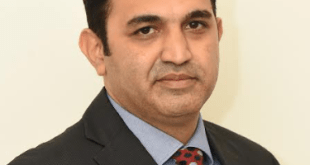When a woman discovers she is pregnant, her focus shifts to nurturing new life. Yet for a small number, cancer casts a shadow on that hope, breast cancer diagnosed during pregnancy or within a few years after childbirth. Known as pregnancy-associated breast cancer (PABC), this rare diagnosis poses unique challenges for both mother and child. As more women delay childbirth in India, understanding PABC’s risks, detection hurdles, treatment options, and emotional toll is vital. This article explores what the data tell us, and why timely care matters deeply.
Incidence and Risk Factors: A Rare, Rising Concern
PABC is uncommon, with estimates globally suggesting around 19.2 cases per 100,000 pregnancies in recent years. In India, precise figures remain elusive due to limited reporting, but single-centre registries place the incidence of PABC at about 0.6 % to 0.7 % of breast cancer cases.
Despite its rarity, PABC carries disproportionate weight because it often strikes younger mothers, and diagnosis tends to be delayed. The risk is higher in women who give birth after age 30, those with a family history of breast cancer, or known genetic predispositions such as BRCA mutations. Parity and breastfeeding also modulate risk: in some cases, more pregnancies or longer breastfeeding may offer some protection, but this effect may be weaker in PABC’s biology.
Biological Characteristics: A More Aggressive Profile
PABC often differs from typical breast cancers in non-pregnant women. Tumors may show more aggressive behaviour: higher grade, more frequent lymph node involvement, and a tilt toward hormone receptor–negative or triple-negative subtypes. Pregnancy’s hormonal milieu, immune modulation, and the process of breast involution (post-lactation tissue remodelling) may contribute to faster progression. Because PABC tends to behave more aggressively, timely diagnosis and tailored treatment become all the more critical.
Diagnostic Challenges During Pregnancy and Postpartum
Diagnosing breast cancer during pregnancy or soon after is fraught with difficulty. Symptoms such as breast swelling, tenderness, nodularity or lumps are often dismissed as normal changes of pregnancy and lactation. This masking effect can delay detection.
From an imaging perspective, mammography is limited (and must use abdominal shielding if employed). Ultrasound is safer and often the first choice; in select cases, MRI without contrast may be considered postpartum but is avoided during pregnancy. Biopsy (core needle) remains the gold standard for diagnosis even during pregnancy, with care to minimize foetal risk.
Because delays in diagnosis often lead to more advanced disease at presentation, awareness among clinicians and patients is essential to minimize lost time.
Treatment Considerations and Approaches: Balancing Dual Lives
Treating PABC is a delicate balance between maternal welfare and foetal safety. A multidisciplinary team—involving oncologists, obstetricians, foetal medicine specialists, and paediatricians—must make decisions tailored to each case.
Surgery (mastectomy or breast-conserving where feasible) is generally safe in all trimesters. Axillary staging is also considered carefully.
Chemotherapy can be administered safely in the second and third trimesters using regimens such as anthracyclines (e.g. doxorubicin) and taxanes. First-trimester use is avoided due to higher risk of miscarriage and foetal malformations. Radiotherapy is contraindicated during pregnancy and must be postponed until after delivery. Hormonal therapies and targeted agents like trastuzumab are deferred until postpartum due to foetal risks.
After delivery, treatment intensifies as needed, targeted therapy, radiotherapy, hormonal therapy, and adjuvant chemotherapy become part of the postpartum plan.
Discussions about fertility preservation are important in postpartum scenarios, as cancer therapies may affect ovarian reserve.
Crucially, the timing of intervention matters: delays to wait for delivery may worsen outcomes, so, whenever safe, therapy should begin without undue hesitation.
Prognosis and Outcomes: Challenges, but Not Without Hope
Historically, survival in PABC was thought to be worse than in non-pregnancy breast cancer. Some studies show increased risk of recurrence and mortality; others, when matched for stage and treatment, find similar outcomes. In an Indian cohort, three-year relapse-free survival was reported at around 40%, and overall survival at about 50%, underscoring the gravity of delayed detection and aggressive disease.
Yet outcomes improve when diagnosis is early, treatment is immediate, and therapeutic decisions are well coordinated. Tailoring therapy to tumour subtype and stage can bring outcomes closer to those of non-pregnancy breast cancers.
Psychosocial Impact and Support Needs
A cancer diagnosis during pregnancy or early motherhood is emotionally wrenching. Women must reconcile fears for their health, their baby’s wellbeing, and the uncertainty ahead. The psychological burden is immense.
They need targeted counselling services that address anxieties about foetal effects, loss of fertility, breastfeeding decisions, and future pregnancies. Support groups specializing in PABC offer shared experience and emotional relief. Healthcare teams should adopt empathetic communication, offer clear explanations, and ensure psychological supports are in place from the start.
Conclusion: Safeguard Motherhood, Protect Lives
Pregnancy-associated breast cancer is rare, but for affected women, it presents complex risks and urgent decisions. Delays in diagnosis, more aggressive biology, and dual stakes for mother and child make its management uniquely challenging.
To change outcomes, India needs heightened awareness among women, obstetricians, and primary care doctors. Suspicious breast changes in pregnancy or postpartum must be promptly evaluated, never dismissed. Treatment protocols should be multidisciplinary, evidence-based, and individualized. Investment in research and support systems focused on this vulnerable group will pay life-changing dividends.
Let us commit, today to closer vigilance, timely care, and compassionate support. In safeguarding mothers, we protect generations to come.
Dr. Krunal Khobragade, Senior Consultant Surgical Oncology, HCG Cancer Center – Nagpur
 Newspatrolling.com News cum Content Syndication Portal Online
Newspatrolling.com News cum Content Syndication Portal Online







